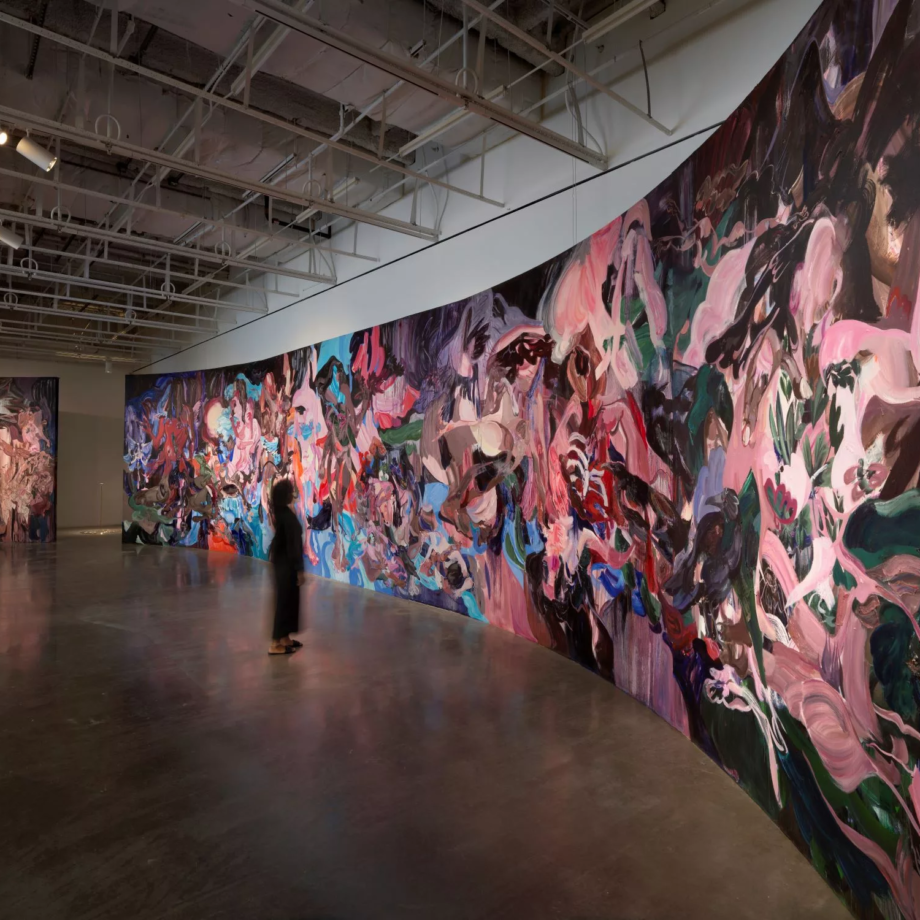Katie Tobin sits down with Wynnie Mynerva to discuss Mynerva’s large-scale paintings and how they relate to notions of sickness and health.
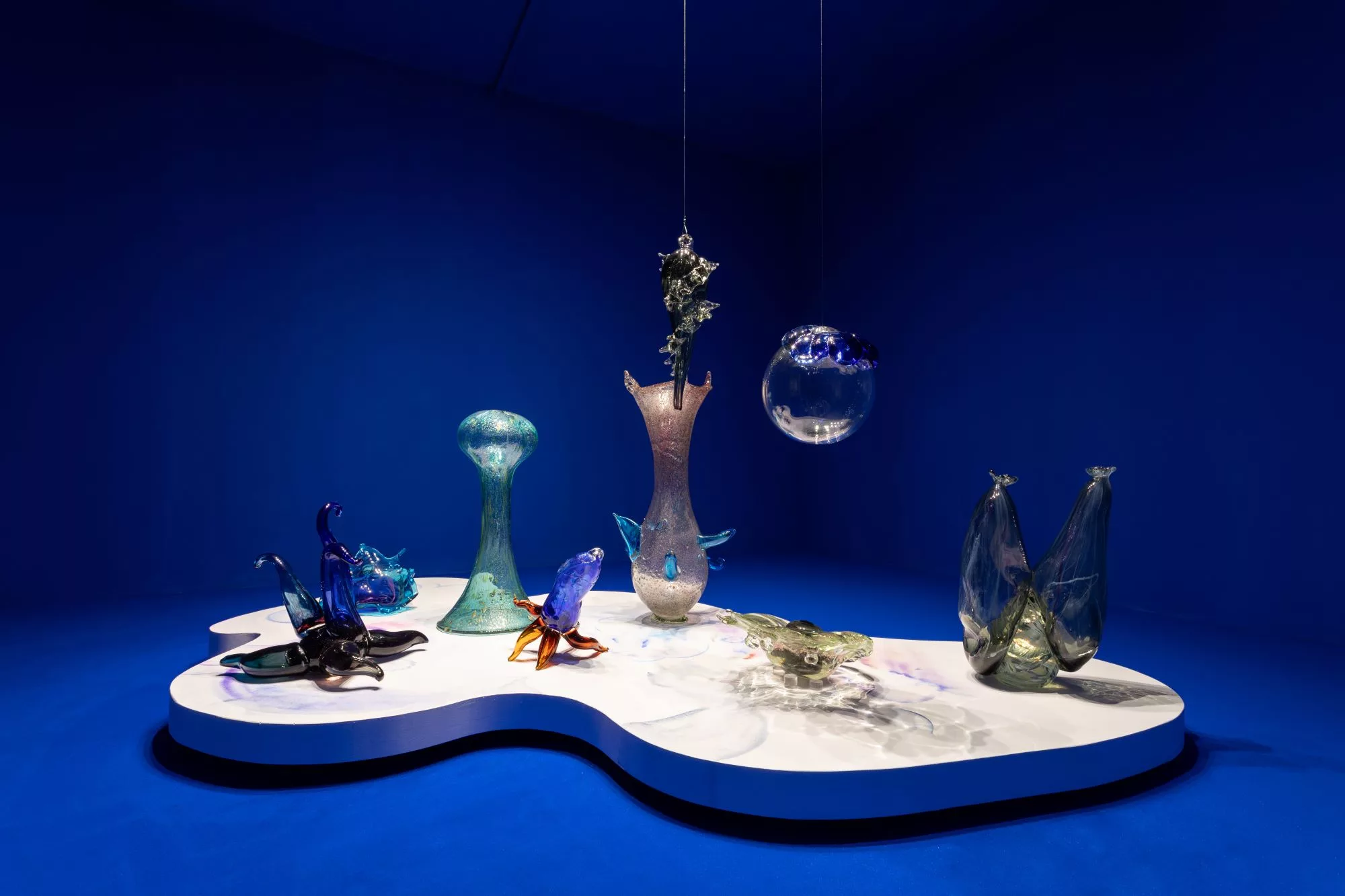
Rallying against centuries of phallocentric artwork, Wynnie Mynerva paints to dismantle entrenched notions of gender roles and challenge the binary constructs that underpin them. Within their large-scale works, characterised by exuberant individualism, they offer playful yet profound self-portraits that investigate the intricacies of sexual and libidinal gratification. However, their artistic methodology also spans painting, performance, and video in a visceral — sometimes violent — exploration of collective trauma and desire. Oscillating between a multiplicity of forms and figurative self-representations, their art achieves maximal impact, transforming galleries into spaces where boundaries blur and identities can shift.
Central to Mynerva’s thematic discourse is the interrogation of the body through mythological and historical iconography of Western Old Masters and the classical art education that shaped their practice. Their new show at Rome’s Fondazione Memmo, Presagio (Omen), sees Mynerva expand this painterly lexicon, intertwining personal experience, collective trauma, and individual desire to craft a new cosmology that reflects on the past, present, and future with hope amidst uncertainty. Inspired by esoteric disciplines and magic, Mynerva redefines the human body beyond conventional notions of health and sickness, shaping a new way of relating to their environment.
In the courtyard of the Fondazione, I sat down with Wynnie to discuss Rome’s influence on their art, their experience with chronic illness, and their exploration of the body’s ecological role in their work.
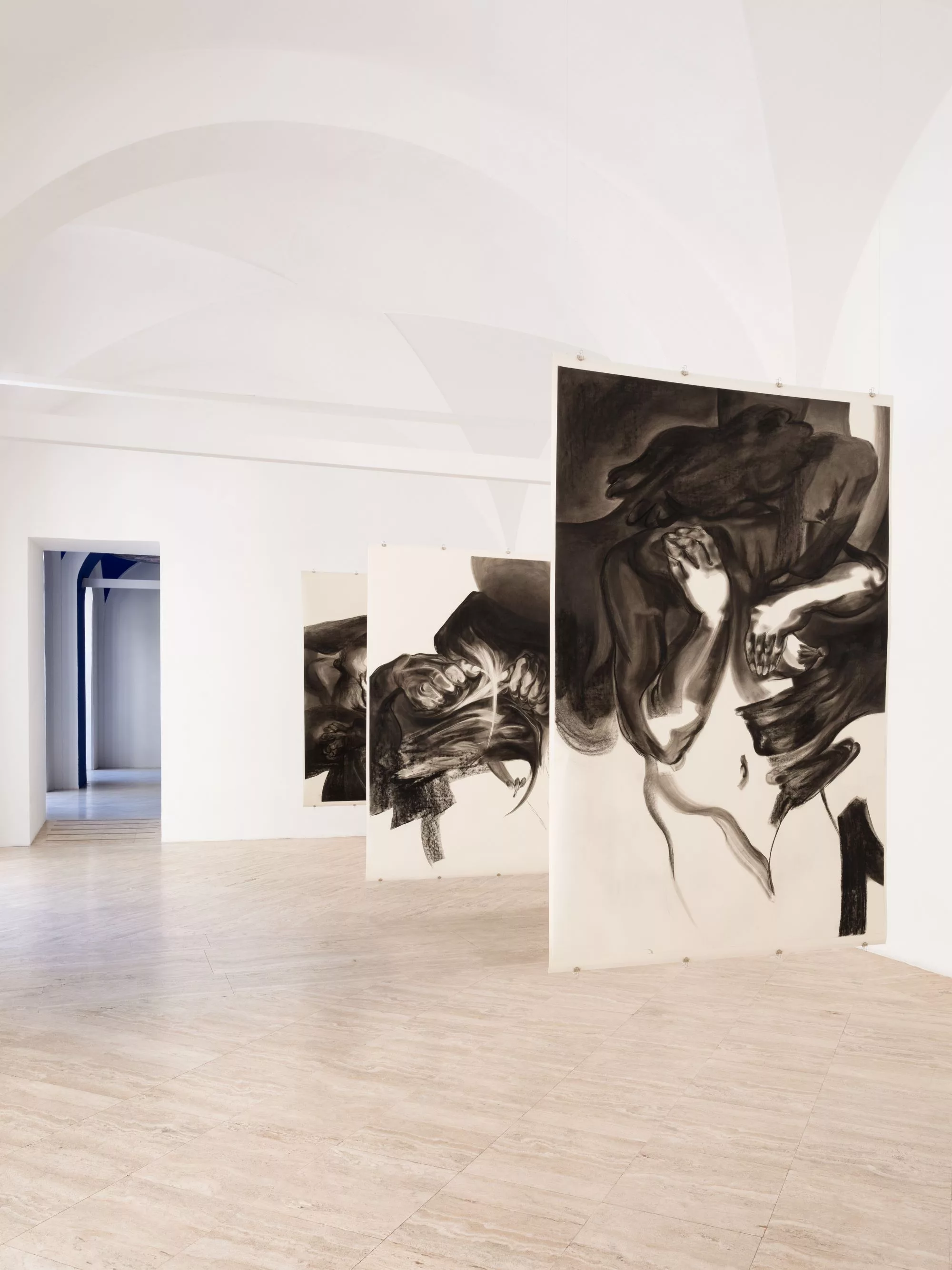
Katie Tobin: Your current exhibition draws on Rome’s cultural history. How did the city influence your artistic vision for this new body of work?
WM: There’s a clear idea in Rome that it possesses a lot of beauty, that there’s a lot of decadence in its beauty. But there’s pain, too. There’s a frailty to it all. This polarity, this binary, is the space in which my work exists, in that space in between. Decadence also talks about the fragility of human life and how easy it is for man to fall apart and lose control. Living with an illness or facing an illness is similar in the sense that you’re losing control of the human body.
KT: I’m really interested in your exploration of the body in flux and how you create art against traditional ideas of sickness and health. Could you talk about how your own experience with chronic illness informs your practice?
WM: When somebody deals with illness, or they find out they have an illness, the first solution is almost always pharmacological. There’s no other experience that manages this — this emotion, this feeling. I couldn’t find an alternative, another solution that wasn’t the idea of fighting the illness, so my work is an attempt to find another way to transition from this idea of fighting something into something different. Art provided the space for this research.
To start with, I actually recuperate my own body. Rather than connecting it to a pill or to a pharmacological solution, I had to start believing in my own body again and the power of it. I needed to think about illness differently. So, in this show, the illness, the bacteria, and the viruses become points of connection between the world and me. I wanted to create a cosmic world to heal not the illness but to heal the metaphors that are around illness. That metaphor is this idea of fighting something to be fought, almost like being at war with the body — being at war with the illness.
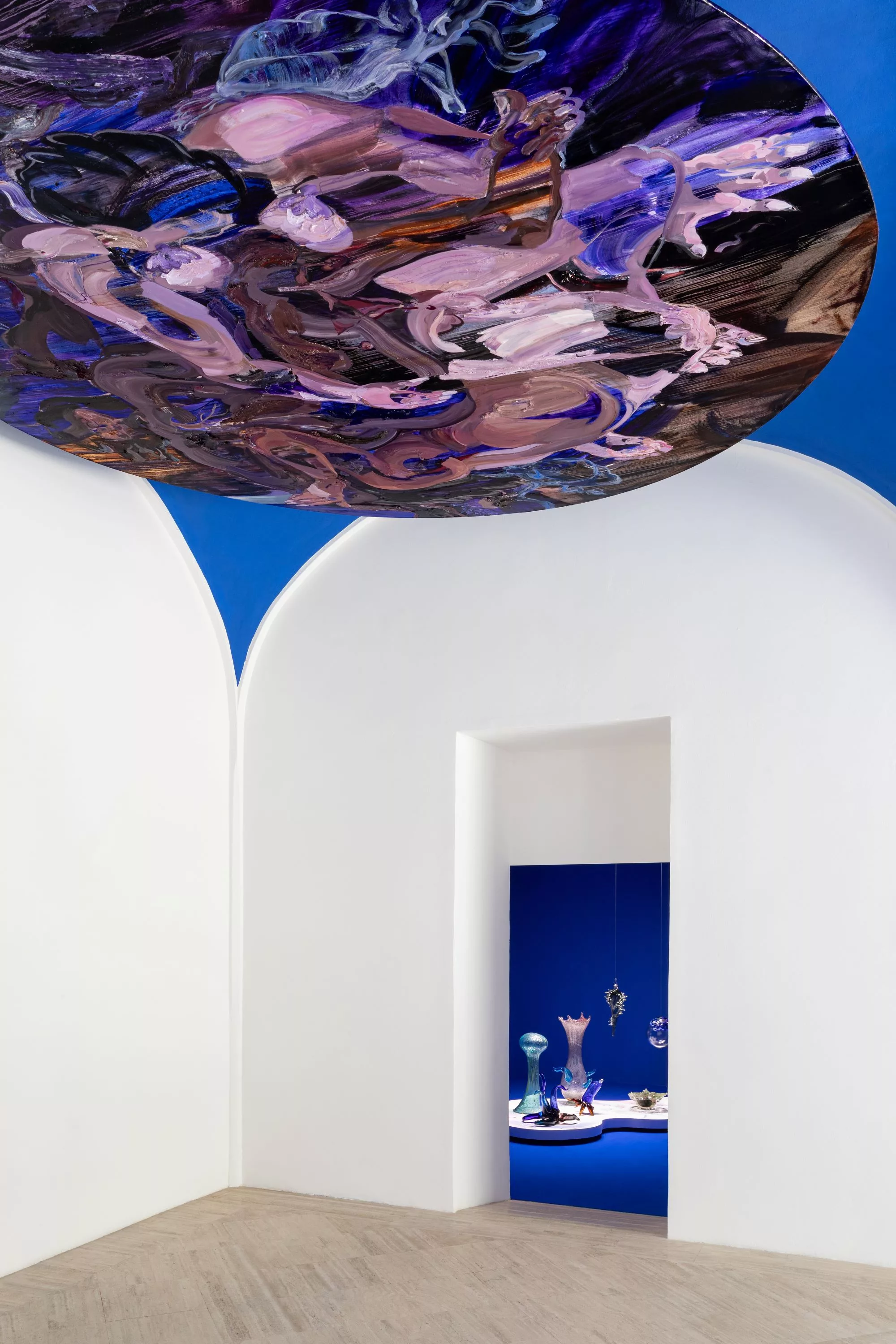
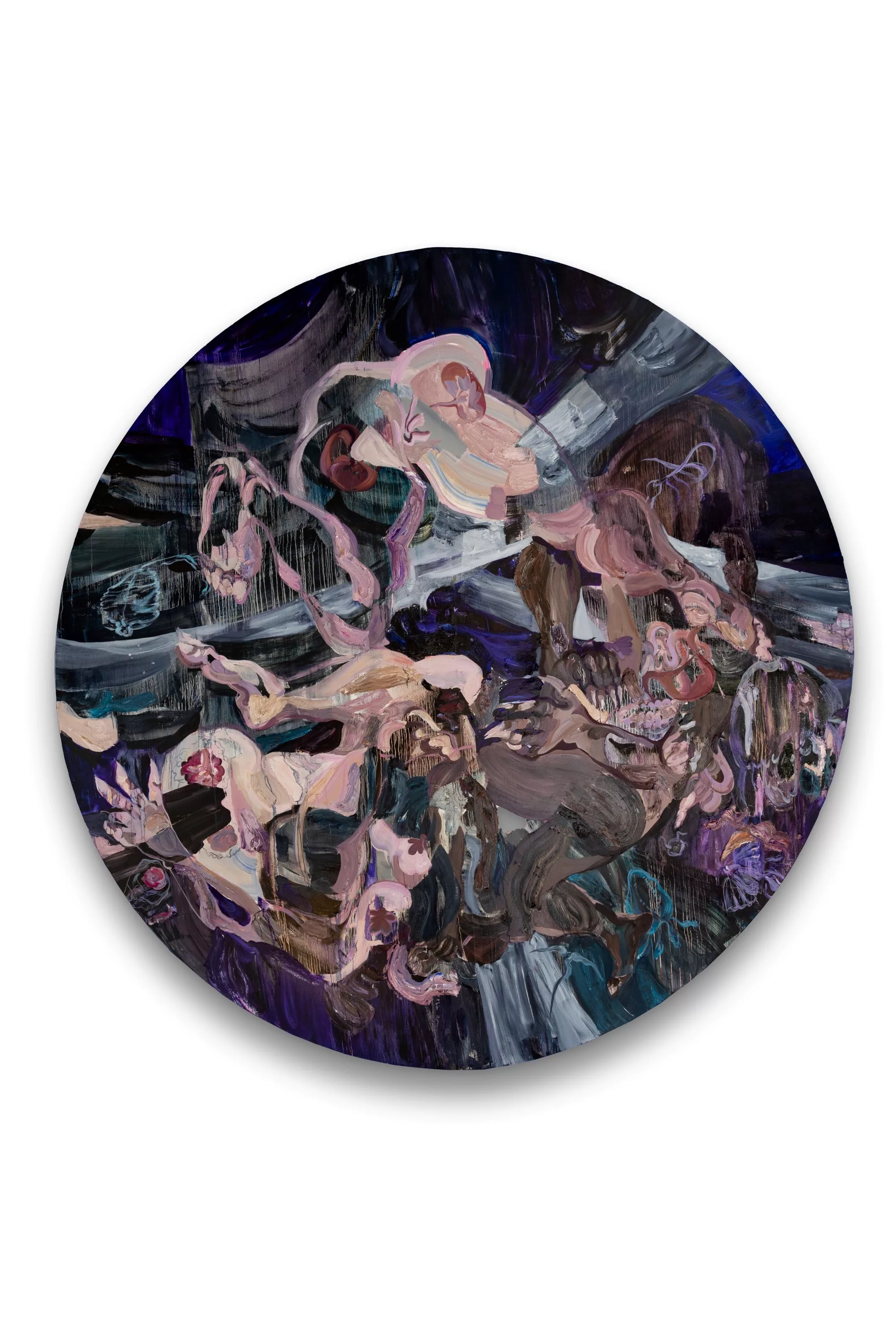
KT: I wanted to talk a bit about how Susan Sontag’s writings on the body inform your conceptualisation of it as an ecological itinerant entity.
WM: See, see, there’s a difference. Susan Sontag’s work is more about the metaphors of illness. Again, this idea of illness being something you have to fight, you have to go to war with. Whereas the idea of entities and the ideas of symbiosis is more like this Lynn Margulis and other writers, like Donna Haraway, that think about the relationship between the body and its ecosystem and create this sort of symbiosis. So that’s the slight difference. The idea of this entity of something fluid, something that kind of transformed and starts from the idea of not thinking of the body as its own entity but as its own separate thing. The body itself includes all of these ecological systems that live within it. We’re thinking of the body almost as a vessel that contains things, but also, there are other vessels that contain the body. What Lynn Lynn Margolis talks about is a symbiosis that creates life. It’s not something separate from everything else, but it’s actually the fact that once contains another. The collaboration, the symbiosis between all of them, is what creates life, isn’t it? From this point of view, you could look at viruses and bacteria, which might be scary, but they are actually part of the ecosystem that keeps us alive.
I think of the human body as a process, something that starts from the microbe to the universe and everything is connected. It’s like what we were saying earlier on [during the tour]: we’re talking about Darwin is not the strongest that survives, but it’s the one that collaborates, as was the case during the COVID pandemic. It was through collaboration that we pulled through. The moment that we try to eliminate tuberculosis or cancer, the idea of fighting it is also to fight the person who carries it. It’s to eliminate the person, not just the illness. We need to change that way of thinking.
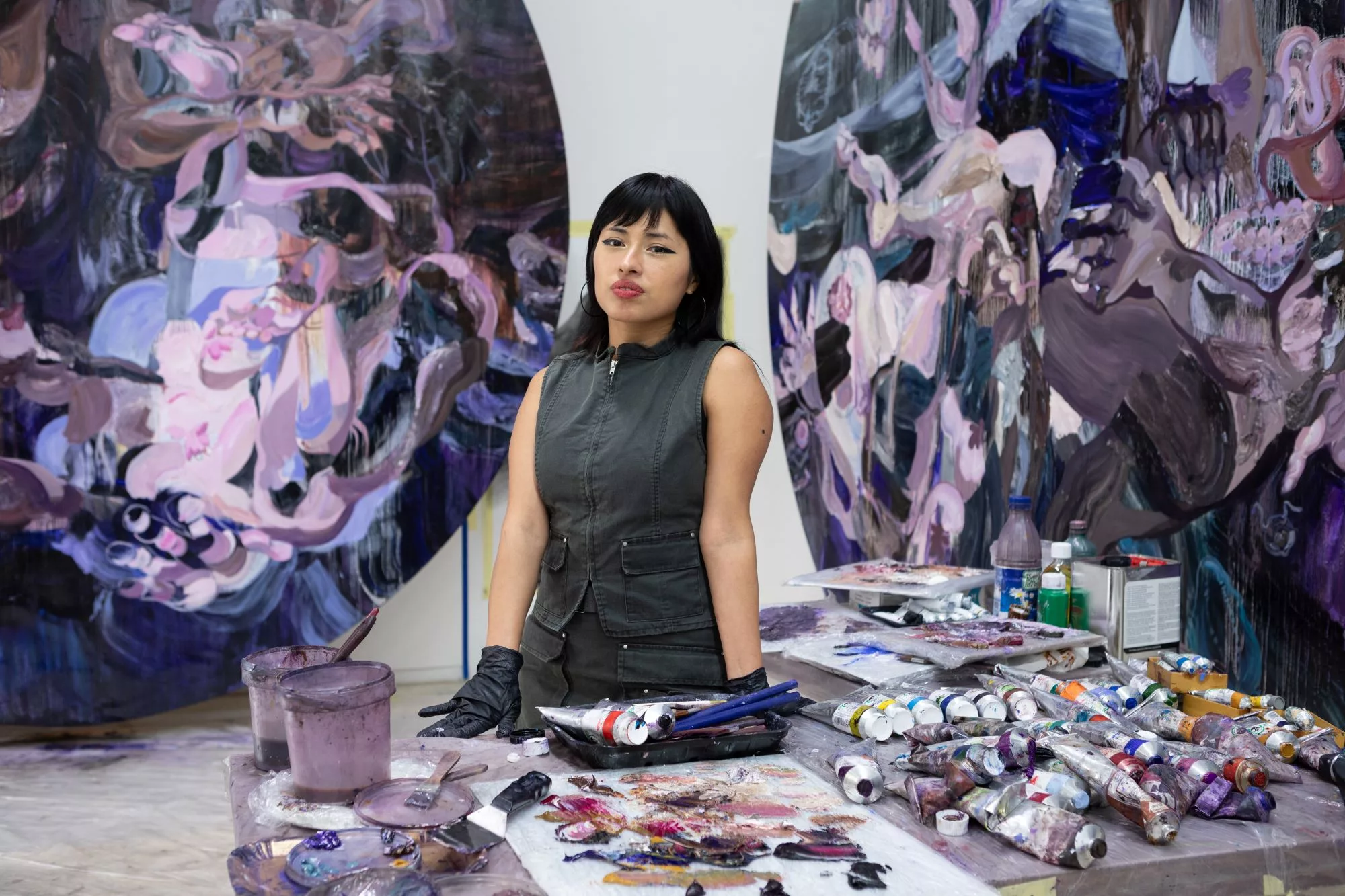
KT: More broadly in your work, you explore this bodily aspect of the human experience in your paintings, performances and videos. How do you use each of these mediums to go about doing this?
WM: Painting is much more narrative in my way of thinking. It’s like a book; it’s the idea of being in front of a painting, the painting is something that you spend time with. You could spend the entire day looking at it. You’re talking, you’re narrating, you’re telling a story about different times during the day. Different moments. Performance is much more about the reality of the moment being in that precise moment of time. I use it to talk about things that painting — because of its beauty, because it’s metaphors — isn’t able to say. With charcoal, for example, there are many layers. It’s very immediate. It’s pure emotion. There are all these different ways of making art, and they all have different potentials. It’s like speaking loudly, softly — it’s different registers. I use different media to communicate on different levels. For example, in the third room, I used glass because I wanted that brilliance and beauty, but I needed an object that kind of rooted it onto the glass. The idea of these vessels potentially containing blood, something that really is to contain something that could be blood, they need to be real. They can’t just be a metaphor, they need to be a drawing of the blood. It has to be something that has that potentiality as an object, as a material. People don’t fear the representation of blood, they fear blood itself. So these need to have that potential super when you grow.
KT: Your paintings often blur the boundaries between abstraction and representation, the organic and the mechanical. How do you approach this balance?
WM: The idea of constantly going between abstraction and figuration is to break with a human form so that the human form can disappear and become a gesture, a movement. I’m also interested in the idea of paint as something that is alive, a medium that you cannot completely control. I work with oil paint because it’s an organic, alive material. When you stop making the piece, the oil continues to run. It takes about a year for it to really settle.
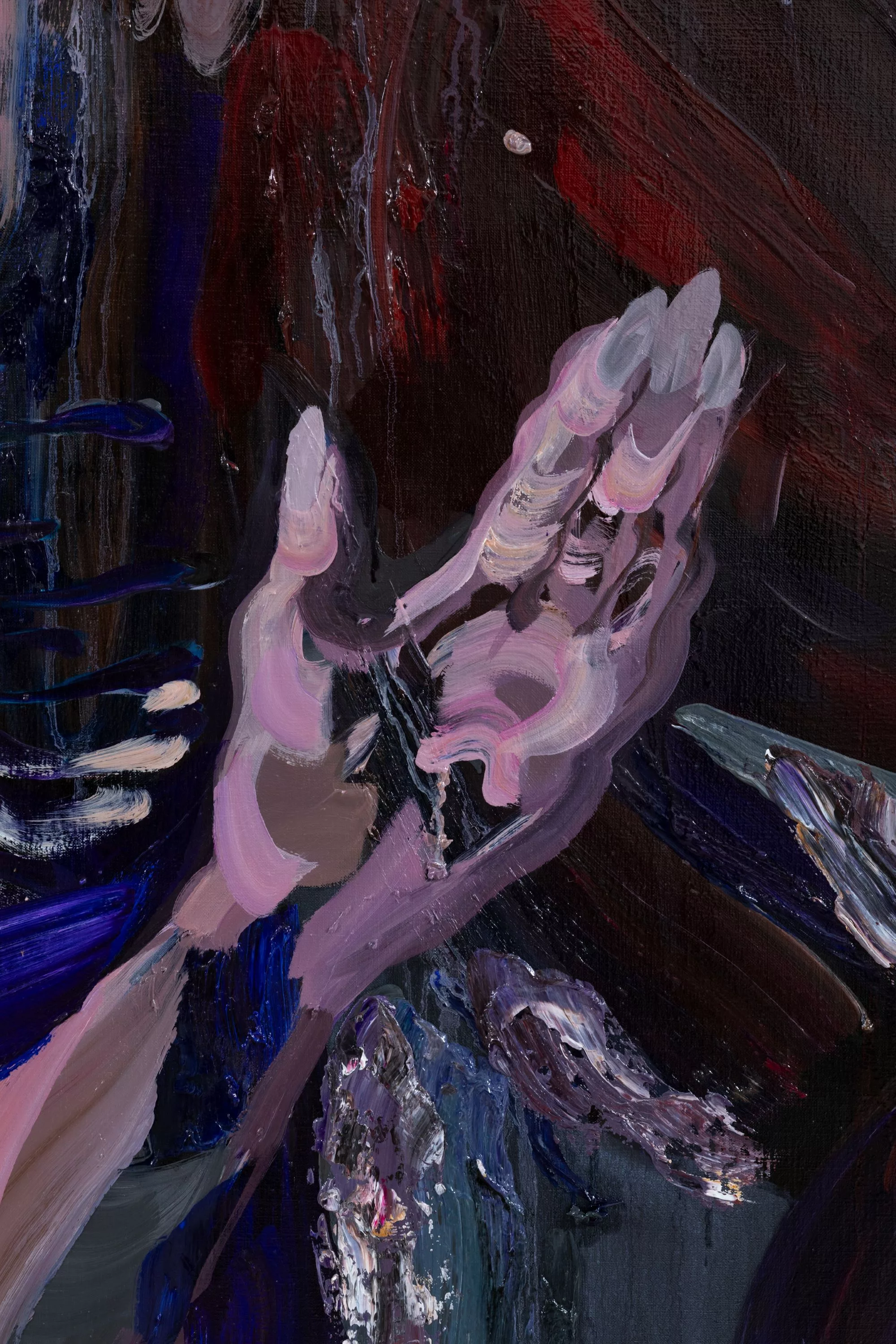
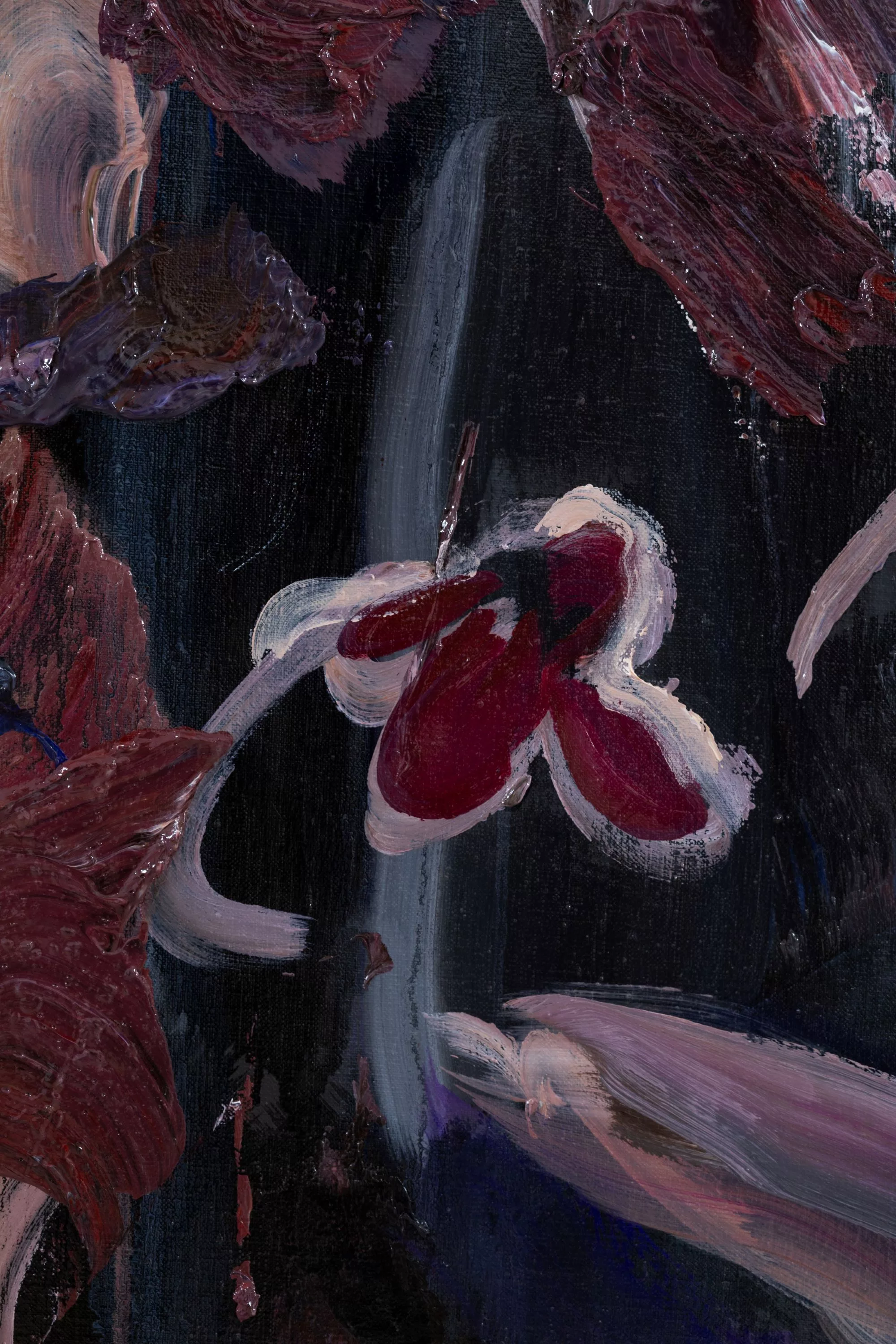
I start with an abstract shape, but I’m not always sure what it is at the beginning. And then through that, I sort of start seeing and creating forms and shapes that sort of manifest through time, through the time of making the work. Lately, in my painting, I don’t put genitals as part of my painting because I’m interested in transforming the body into something bigger than its own genitals and its own gender. It’s thinking about animals, plants, the body going out of itself and its own trappings.
KT: Following on from that, how do you incorporate historical and mythological iconography into your work- and what role does it play in subverting traditional power dynamics?
WM: In paintings, a lot of narrations, mythological and historical, give a narrative to everyday life. I always think we keep repeating the stories that have already been told, but we haven’t thought about telling new stories. Painting, then, is about taking these stories and modifying them so that they evolve and become something new. We’ll come up with a cure and the change needs to be progressive and slow and takes time so that these stories can change into something that you believe in point of view, your point of view, it’s something that kind of is meaningful to you.
For me, the history of art is a big fiction, religion is an accessory. The best way to relate yourself to it is to change it into something else.
Written by Katie Tobin
